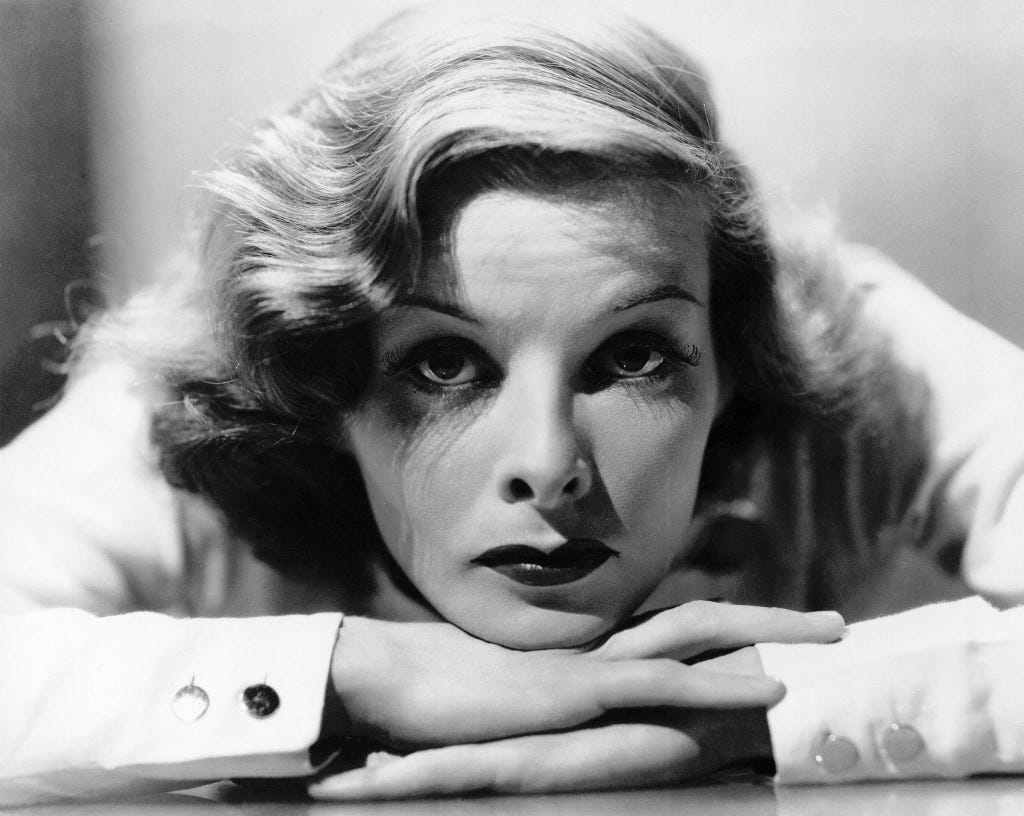Call Me Kate (2023)
It’s cliched by now to say Katharine Hepburn was a force of nature and she was an inspiration to so many people. One of my piano teachers, Mrs. Lyman, who taught long after most of her peers had retired, used to say, “If Katharine Hepburn can keep going, so can I.”
Of course, she said that decades ago before Hepburn died, but a new documentary, Call Me Kate shows how Hepburn continues to influence women and Hollywood.
The documentary intersperses Hepburn’s own words with interviews with her nephew, her niece, and various archivists and historians. We’re also treated to letters donated to the Katharine Hepburn Museum in Old Saybrook, Connecticut by grandniece Schulyer Grant, best known as Diana Barry in the Kevin Sullivan Anne of Green Gables series.
Hepburn’s former home in Old Saybrook is the backdrop for the film, with an actress who is presumably Hepburn going about her day and rifling through old letters and photos. We see what Hepburn saw and walk where she walked, from the beach to the grounds of the house to the the streets of the town. The film sticks to Connecticut instead of taking us to Hepburn’s other homes in New York City and the Los Angeles area, but what we see is substantial and calming.
The film is intensely personal and intensely direct; its plumbline is the idea Hepburn was raised with and carried her entire life: Do what you want.
This might seem like a selfish philosophy, but for Hepburn it enabled her to go through life acting as if the barriers and expectations imposed upon women weren’t there. If she wanted to wear pants, she wore pants. If she wanted to buy the rights to one of her plays, which she did with The Philadelphia Story, she did, and she didn’t wait for anyone to tell her no. She just did it.
Hepburn could be a fun woman, but she could also be domineering, especially towards the end of her life, and what’s fun is seeing how the people who knew her best reacted to her. Laura, one of the people she lived with in her twilight years, got tired one day of Hepburn bossing her around, and to Hepburn’s nephew’s great delight, staunchly refused to bring Hepburn the cup of coffee she kept asking for.
Naturally, there’s also quite a bit about Hepburn’s thirty-year relationship with Spencer Tracy, and it’s cool to see his grandson and great-grandson discussing their famous forebear. Unlike Hepburn, though, Tracy was highly conflicted about the images he projected to the public, to his family, and to himself, and he tried to mask his discomfort in alcohol.
Eventually, however, Tracy’s hard living wore him out. The film makes the excellent point that in his last movie, Guess Who’s Coming To Dinner, Tracy very often sat down because his body was failing him. Seventeen days after filming wrapped, he went into the kitchen one early morning. Hepburn, hearing the sound of glass smashing, rushed in to find Tracy dead of a heart attack.
Some have speculated that Tracy and Hepburn never loved each other, and I’m not among those. I believe they honestly cared about each other; Tracy’s eyes always twinkled when he looked at Hepburn, and decades after Tracy’s death Hepburn would wear Tracy’s sweaters, which she would never wash. It was comforting to her to be able to smell Tracy’s scent.
The one thing Call Me Kate doesn’t mention is the phrase, “box office poison.” Hepburn’s failures were, in the end, stepping stones on the road of life and in the end, unimportant in relation to her successes. She kept going no matter what.
Call Me Kate is currently streaming on Netflix. Rated TV-14.
My grade: A+
Principal Cast: Katharine Hepburn, Kat Kramer, and Bonnie Greer.
Directed by Lorna Tucker.




